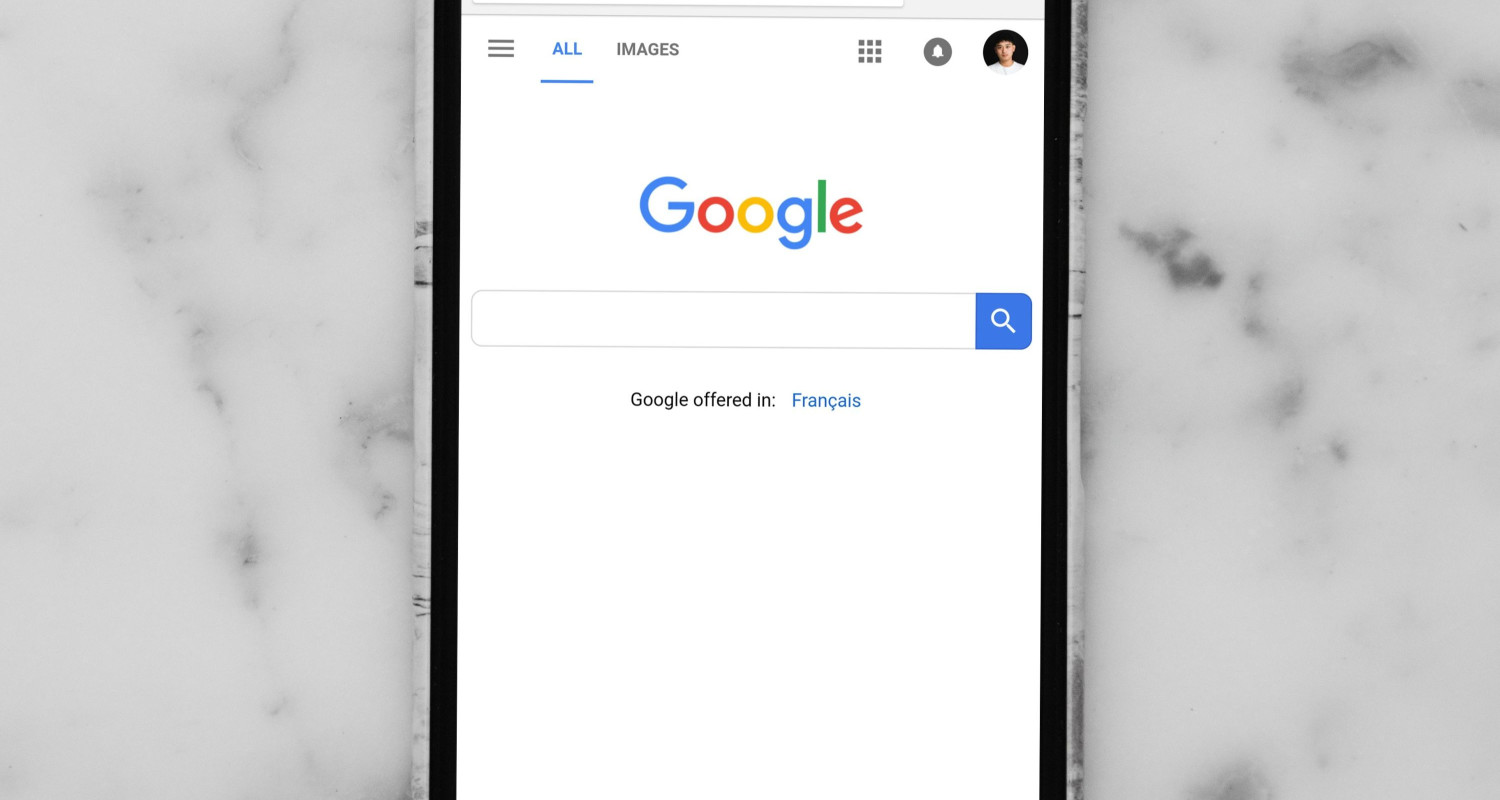The freelance writing world is bustling with talent, making it challenging for newcomers to build a portfolio. Without a strong portfolio, your voice risks being drowned out in the chorus of established writers. This article will teach you to build a freelance writing portfolio from scratch.
How to Build a Freelance Writing Portfolio? Craft a diverse portfolio showcasing your best writing across various formats and niches. Start by including personal projects or volunteer work, especially if you’re figuring out how to build a writing portfolio without experience. Optimize for SEO and leverage social media to enhance visibility. Regular updates with fresh, quality content will keep your portfolio dynamic and engaging, making it the best way to build a freelance writing portfolio.
Keep reading to understand everything in detail!
Understanding the Purpose of a Writing Portfolio
A freelance writing portfolio is more than just a collection of your work; it’s your professional storyteller, narrating your journey, skills, and versatility in the world of words. It’s a curated showcase of what you’ve written and who you are as a writer.
This portfolio is your ticket to standing out in a crowded market, a tangible proof of your writing prowess. As you explore the essence of a writing portfolio, consider reading about how to become a freelance content writer, which can provide deeper if you’re a beginner or want to learn new things.
Why a Portfolio Matters for Freelance Writers?
A freelance writing portfolio is indispensable for freelance writers. It’s your brand, billboard, and best pitch all rolled into one. In a realm where your words are your currency, a portfolio effectively communicates your value to potential clients.
It’s not just about listing your past work; it’s about highlighting your successes and showcasing your ability to adapt to various styles and topics.
The Magnetic Pull of a Well-Crafted Portfolio
A well-crafted freelance writing portfolio does more than just list your work; it attracts clients. It’s like a magnet, pulling in potential clients by giving them a glimpse of your storytelling ability and proficiency in turning complex ideas into engaging content.
Your portfolio is a window into your writer’s soul, offering insights into your style, tone, and areas of expertise. It’s not just what you say but how you say it that can turn a prospect into a client.
Who Looks for Your Portfolio?
When hiring, clients from all sectors – digital marketing agencies, publishers, or individual entrepreneurs – often ask for a writing portfolio. It’s their way of assessing whether your writing style aligns with their vision and needs. A portfolio is your proof of concept, demonstrating that you’re not just talking but have the work to back it up.
Crafting Your Portfolio: What to Include
Your portfolio should mix your best work – articles, blog posts, copywriting samples, and relevant content. Include a variety of styles and formats to show your range. Don’t just focus on quantity; quality matters. Each piece should reflect your ability to adapt to different writing demands.
Remember, your portfolio is your narrative; make sure it tells the story you want your clients to hear, especially if you’re learning to build a writing portfolio without experience.
7 Steps to Create Your Freelance Writing Portfolio
Embarking on the journey to build a writing portfolio? Here’s a step-by-step guide to get you started. Remember, your portfolio is your professional handshake in the digital world, so let’s make it count! Let’s start with how to build a freelance writing portfolio:
Step 1: Choosing the Right Platform

Personal Website
Your website is like your personal digital kingdom. It offers the most control and professional presentation. Platforms like WordPress, Squarespace, or Wix offer customizable templates. Ideal for those who want a unique touch and have some technical know-how.
LinkedIn is perfect for networking and professional connections. Use It to showcase your portfolio in a more corporate environment. It’s great for articles and thought leadership pieces.
Content Platforms
Sites like Medium or JournoPortfolio are excellent for beginners. They’re user-friendly and perfect for those who want to focus solely on content without worrying about web design.
Step 2: Selecting and Organizing Your Work

Quality Over Quantity
Choose pieces that showcase your best work. It’s about impressing, not overwhelming.
Diversity is Key
Include a variety of styles—blogs, articles, and copywriting samples—to show your range and adaptability.
Organize Thoughtfully
Categorize your work. For instance, have separate sections for different niches or content types. This makes it easier for clients to find relevant samples.
Step 3: Crafting an Engaging Bio and Introduction

Be Yourself
Your bio should reflect your personality. Are you quirky, serious, or somewhere in between? Let it shine through.
Highlight Your Skills
Mention your niche expertise, years of experience, and any notable clients or publications.
Make it Memorable
Start with a hook – an interesting fact or a compelling statement about your passion for writing.
Call to Action
End with an invitation to explore your work or get in touch. Make it easy for clients to contact you.
Step 4: Showcasing Your Work
Use Visuals
Add images or graphics to make your portfolio visually appealing. Even if you’re focusing on text, visuals can break up the content and add interest.
Tell a Story
Each piece should have a brief introduction. Explain the context, the piece’s goal, and any results it achieved.
Stay Updated
Regularly refresh your portfolio. Remove older pieces and add new, relevant work to keep it current.
Step 5: SEO and Visibility
Optimize for Search Engines
Use relevant keywords in your bio and descriptions. If you specialize in travel writing, include terms like ‘travel writer’ or ‘travel content creator’.
Share Your Portfolio
Don’t just wait for clients to find you. Share your portfolio on social media, writing groups, and professional networks.
Step 6: Seeking Feedback

Get a Second Opinion
Sometimes, we’re too close to our work to be objective. Ask a fellow writer or a mentor to review your portfolio. Constructive feedback can be invaluable. You might find these best productivity planners helpful for managing your time effectively during this process.
Step 7: Iteration and Improvement
Stay Agile:
Your portfolio is a living document. Adapt and evolve it as your career grows. Experiment with different layouts or content types to see what resonates with your audience.
Best Content Writing Portfolio Examples
Remember, how to build a freelance writing portfolio is a journey. It’s about balancing showcasing your skills and capturing your unique voice. Follow these steps, and you’re well on your way to creating a portfolio that displays your talent and tells your story as a writer.
Exploring successful content writing portfolios can provide invaluable insights and inspiration. Let’s look at some real-life examples of writers who have effectively showcased their talents:
Elna Cain: Elna’s portfolio, found on her website (ElnaCain.com), is a testament to her expertise in freelance writing. She skillfully displays a variety of content types, including blog posts and articles, catering to different niches. Her site is a portfolio and a resource for aspiring freelance writers.

Kristi Hines: As a freelance writer and blogger, Kristi’s portfolio (KristiHines.com) is a blend of professionalism and personal touch. She showcases her work with high-profile clients and includes testimonials, enhancing her portfolio’s credibility.

Jorden Roper: Jorden’s portfolio on CreativeRevolt.com is a vibrant example of how to blend personality with professional accomplishments. Her portfolio is straightforward, easy to navigate, and highlights her writing skills across various niches.

Carol Tice: Carol’s portfolio on MakeALivingWriting.com doubles as an educational platform for writers. Her portfolio is comprehensive, showcasing her writing across different formats and industries.

These freelance writing portfolios stand out for the quality of content and their strategic presentation and SEO optimization. They serve as excellent benchmarks for writers looking to create or enhance their portfolios.
Diversifying Your Portfolio Content
Diversity is your secret weapon in the quest for how to build a freelance writing portfolio. It’s not just about filling your portfolio with content; it’s about showcasing a spectrum of your abilities. Let’s dive into why variety is vital and how to achieve it, especially when you’re just starting or have limited client work.
The Power of a Diverse Portfolio
Showcasing Versatility
A diverse portfolio demonstrates your ability to tackle different writing styles and subjects. Whether it’s a punchy blog post, a detailed article, or a compelling piece of Keyword Research:Keyword Research:, each type adds a new dimension to your skill set.
Meeting Client Needs
Clients often look for writers who can adapt to their specific needs. By displaying a range of content types, you signal to potential clients that you can handle various writing tasks.

Standing Out
In a sea of freelance writers, a portfolio that spans multiple genres and formats is more likely to catch the eye of clients and editors.
Strategies for Building a Diverse Portfolio
Start with Personal Projects
If you’re pondering how to build a writing portfolio without experience, begin with personal projects. Write about your passions or interests. Create blog posts, articles, or even fictional pieces that showcase your writing style and creativity.
Volunteer Your Skills
Non-profits, local businesses, or online communities often need content but can’t afford professional writers. Offer your services in exchange for the opportunity to include the work in your portfolio.

Create Mock Projects
Imagine your dream clients and write content tailored for them. This could be a series of blog posts for a travel website, product descriptions for an e-commerce site, or a promotional brochure for a local business.
Take Advantage of Content Platforms
Platforms like Medium or LinkedIn allow you to publish your work and reach a wider audience. This not only adds to your portfolio but also helps in building your online presence.
Experiment with Different Formats
Don’t limit yourself to just articles and blogs. Try writing press releases, whitepapers, email campaigns, or social media content. Each format requires a different skill set and adds depth to your portfolio.
Include Testimonials and Reviews
Ask for testimonials if you’ve done any freelance work, even unpaid. Client feedback adds credibility to your portfolio and gives potential clients insight into your work ethic and skills.
Keep Learning and Updating
Writing styles and trends evolve. Keep learning and updating your portfolio with fresh content. This shows you’re committed to growth and staying relevant in the industry.
Making the Most of Limited Experience
Focus on Quality
When your experience is limited, the quality of your work becomes even more crucial. Ensure that each piece in your portfolio is polished and error-free.
Highlight Your Unique Voice
A strong, unique writing voice can significantly impact even with fewer samples. Let your personality shine through in your writing.
Be Strategic
Choose projects that align with the type of writing you want to do in the future. This strategic approach can help you attract the right kind of clients.
In conclusion, diversifying your portfolio is about showcasing your range as a writer and your ability to adapt to different writing needs. Building a freelance writing portfolio that displays your talent and opens doors to new opportunities is crucial. Remember, a portfolio is a work in progress; keep adding, refining, and evolving as you grow in your writing career.
SEO Optimization for Your Portfolio
SEO optimization makes your freelance writing portfolio discoverable in the digital age. It’s not just about showcasing your work; it’s about ensuring the right people find it. Here are some basic SEO tips to enhance your portfolio’s visibility:
- Keyword Research: Start by identifying keywords relevant to your writing niche. Tools like Google Keyword Planner or Ahrefs can help you find terms potential clients might use to search for writers like you.
- Incorporate Keywords Naturally: Once you have your keywords, weave them into your portfolio’s content. This includes your bio, project descriptions, and even the titles of your pieces. Remember, the key is to use them naturally – stuffing keywords can do more harm than good.
- Optimize Your Meta Descriptions: Each page on your portfolio site should have a compelling meta description with relevant keywords. This helps with search engine rankings and encourages users to click when your site appears in search results.
- Use Alt Text for Images: If your portfolio includes images, use alt text that describes the image and includes relevant keywords. This improves accessibility and contributes to SEO.
- Regular Updates: Search engines favor regularly updated content. Keep adding new pieces to your portfolio and updating existing ones to stay relevant.
Implementing these SEO strategies can significantly increase the chances of your freelance writing portfolio being found by the right audience, making it an effective tool for attracting potential clients.
While optimizing your portfolio, understanding the role of AI in marketing automation can benefit your digital presence.
Leveraging Social Media and Online Platforms
In today’s interconnected world, social media and online platforms are invaluable for amplifying the reach of your freelance writing portfolio. These tools not only enhance visibility but also open doors to new opportunities.
LinkedIn is a powerhouse for professional networking. It allows you to connect with industry peers and potential clients. Share your latest articles, celebrate milestones, and engage with others’ content. For instance, a writer like Julia Evans frequently shares insights and articles, engaging a community of followers and potential clients.

Medium
This platform is ideal for writers looking to reach a broader audience. You can attract readers from their vast user base by publishing on Medium. Writers like Benjamin Hardy have leveraged Medium to share their work, leading to book deals and increased professional visibility.
Guest Blogging
Writing guest posts for established blogs or websites can significantly boost your portfolio’s exposure. Moreover, it allows you to tap into these platforms’ existing audience. For example, contributing to sites like ‘The Write Life’ or ‘Content Marketing Institute’ can showcase your expertise to a wider audience, often leading to more freelance opportunities.
Furthermore, by strategically using these platforms, you can significantly enhance your portfolio’s visibility, demonstrate your expertise to a wider audience, and establish yourself as a thought leader in your niche.
In addition to social media, learning how to create digital products can further enhance your portfolio’s appeal and reach.
Networking and Collaborations
Networking and collaborations play a pivotal role in the growth and diversification of your freelance writing portfolio. Building relationships within the writing community and beyond can lead to opportunities that enrich your portfolio with varied content and experiences.
The Power of Networking
Networking isn’t just about making connections; it’s about building relationships that can lead to collaborative opportunities. Engaging with other writers, editors, and content creators can open doors to guest post opportunities, joint projects, and referrals.
For instance, being active in writing forums, attending webinars, or participating in writing groups can connect you with people who might need your writing expertise.
Leveraging Collaborations for Portfolio Growth
Collaboration is a two-way street that benefits all parties involved. Collaborating with other writers or websites can add diverse content to your portfolio. For example, as a writer, I have contributed to sites like Appuals, TechWhoop, and FinancePolice, showcasing my versatility in different niches.
Guest Contributor Roles
Being a guest contributor allows you to delve into various niches and styles. Additionally, my contributions to sites like GoodMenProject, Workology, and Home Business Magazine have diversified my portfolio and helped me build a robust online presence.
Furthermore, these opportunities often come with the added benefit of charging a competitive price for your content, reflecting the value and expertise you bring.
Delivering Quality Content
Moreover, when collaborating or guest posting, delivering high-quality content that aligns with the host site’s standards and audience is crucial. This strengthens your reputation as a reliable writer and increases the likelihood of future collaborations.
In conclusion, networking and collaboration are indispensable for a freelance writer. They provide a platform to showcase your versatility, reach a broader audience, and, ultimately, enhance the quality and diversity of your writing portfolio. By engaging in these practices, you can build a portfolio that truly reflects your capabilities and professionalism in the writing world.
Regular Updates and Portfolio Maintenance
Regularly updating your freelance writing portfolio is crucial. It’s not a ‘set and forget’ asset; it’s a dynamic showcase of your evolving skills. Best practices include:
- Adding Fresh Content: Consistently add new pieces to demonstrate your current writing style and areas of expertise.
- Pruning Older Work: Remove outdated or irrelevant pieces to keep your portfolio focused and high-quality.
- Reflecting Growth: Update your bio and skills section to mirror your professional development and new competencies.
Updating your portfolio ensures it remains a relevant and compelling representation of your writing journey.
FAQs
Absolutely. A portfolio is essential for freelance writers. It showcases your writing style, areas of expertise, and provides tangible proof of your abilities to potential clients. It's often the first thing clients ask for and can be a deciding factor in getting hired.
Begin by creating content on topics you're passionate about. You can start a blog, write guest posts for blogs or websites, or contribute to platforms like Medium. These pieces can serve as initial portfolio samples. Volunteering your writing services for non-profits or local businesses can also provide material for your portfolio.
Choose a platform (like a personal website, LinkedIn, or a content platform) and select your best work that showcases your writing range. Include a variety of content types and ensure your portfolio is well-organized, with an engaging bio and clear contact information. Regularly update it with your latest work.
Yes, it's possible to make $1000 a month or more as a freelance writer. Your earnings depend on factors like your niche, experience, the quality of your work, and your ability to market yourself. Building a strong portfolio and network can help you find higher-paying projects.
Start by honing your writing skills and identifying your niche. Create a portfolio, even if it's with personal projects at first. Network with other writers and potential clients through social media, writing groups, and professional platforms. Pitch your services to potential clients or apply for freelance writing jobs online.
Yes, freelance writers are in high demand, especially as businesses increasingly recognize the value of quality content for digital marketing, SEO, and online presence. The demand spans various industries and includes content writing, copywriting, technical writing, and more. The key is to find your niche and market your skills effectively. Do freelance writers need a portfolio?
How do I start freelance writing with no portfolio?
How do I create a freelance portfolio?
Can I make $1000 a month freelance writing?
How do I start as a freelance writer?
Are freelance writers in demand?
Conclusion
Remember, a diverse portfolio showcasing a range of content types, from blog posts to copywriting samples, speaks volumes about your versatility. Embrace guest posting and collaboration opportunities to add depth and breadth to your work. Regular updates and maintenance ensure your portfolio remains a true reflection of your evolving skills and writing prowess.
As you develop your portfolio, remember the power of habit formation in maintaining consistency and quality in your writing. Now, it’s your turn. Whether starting from scratch or refining an existing portfolio, use these insights to craft a portfolio that resonates with your audience.
Let it be a testament to your journey, a tool that opens doors to new opportunities, and a reflection of the unique writer you are. So, start today, keep evolving, and let your portfolio be the key to unlocking the doors of opportunity in the vast world of freelance writing.




